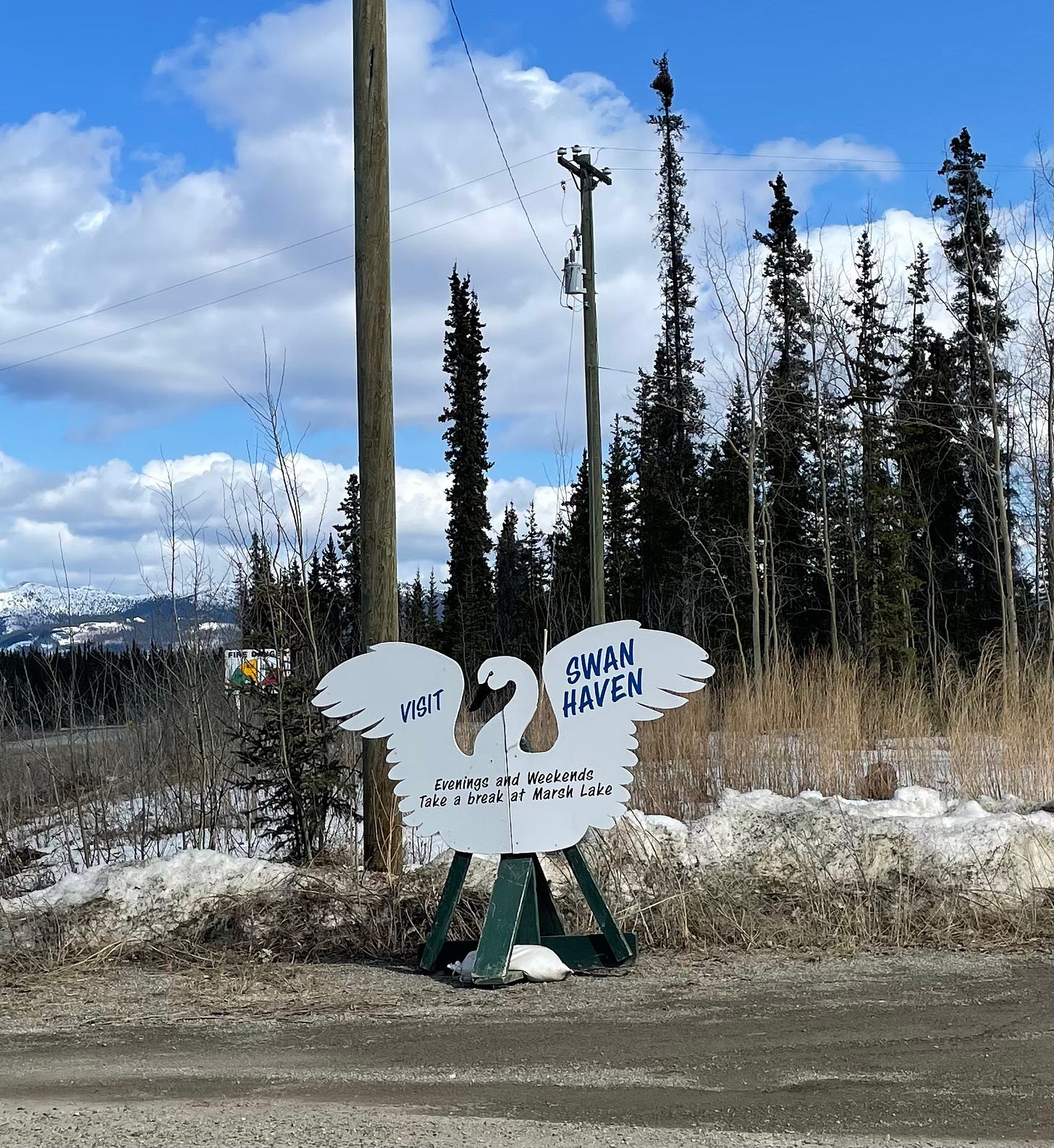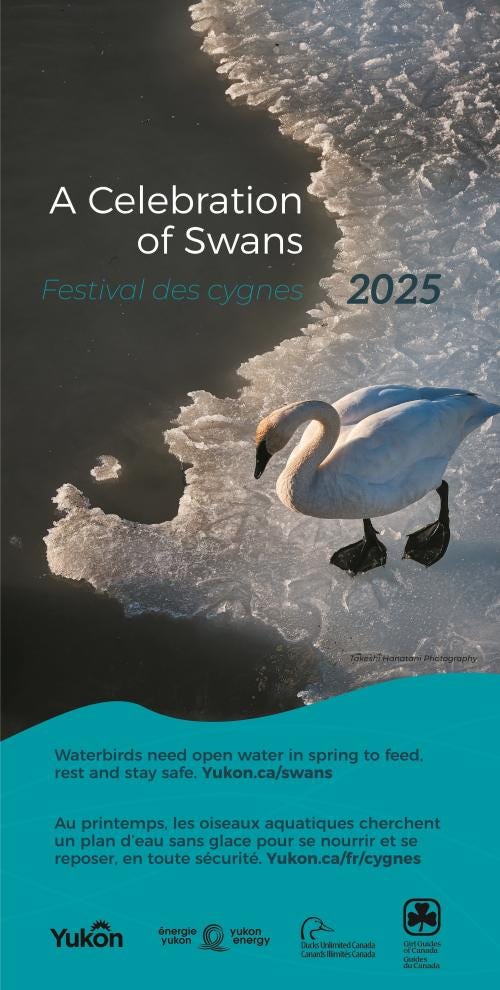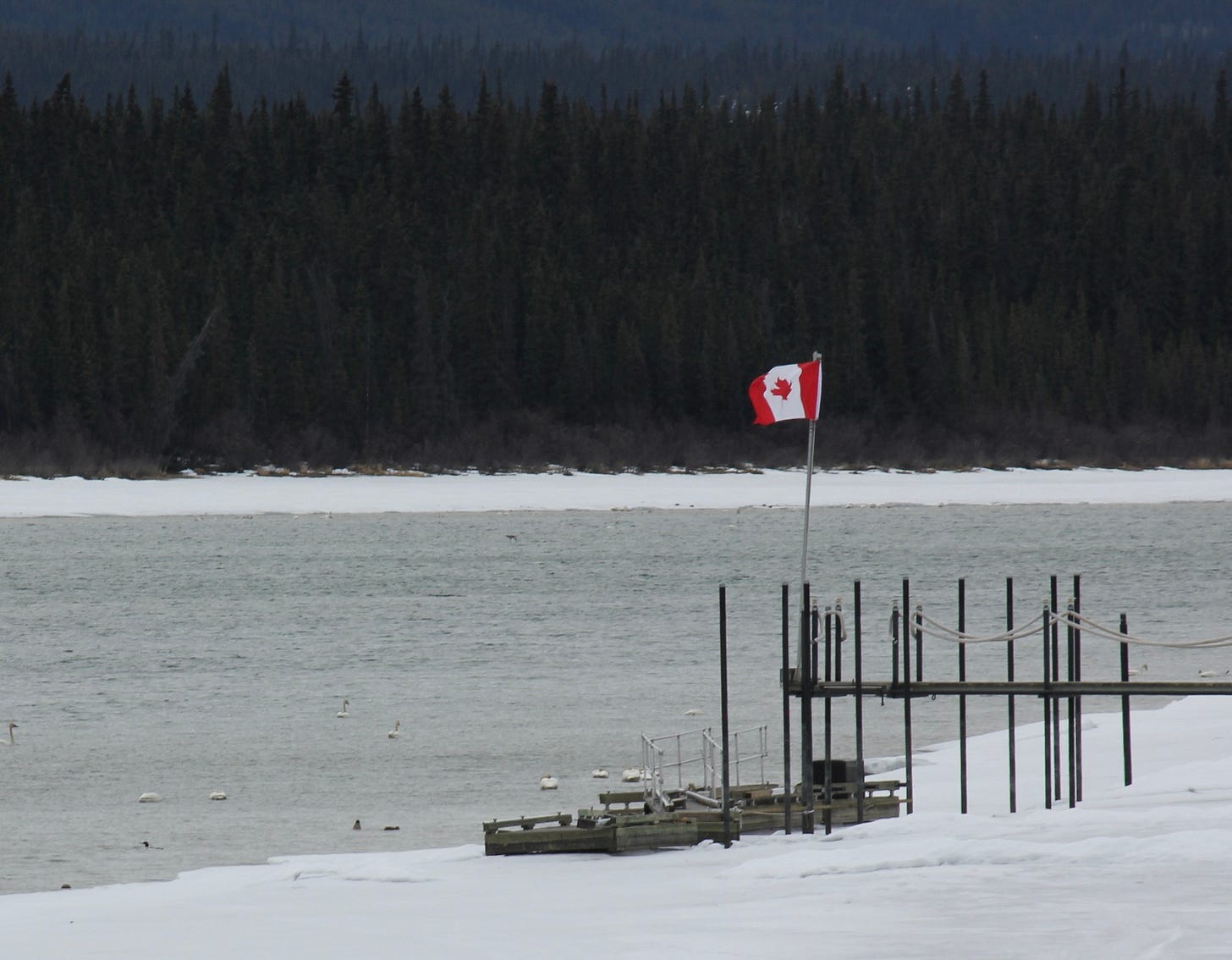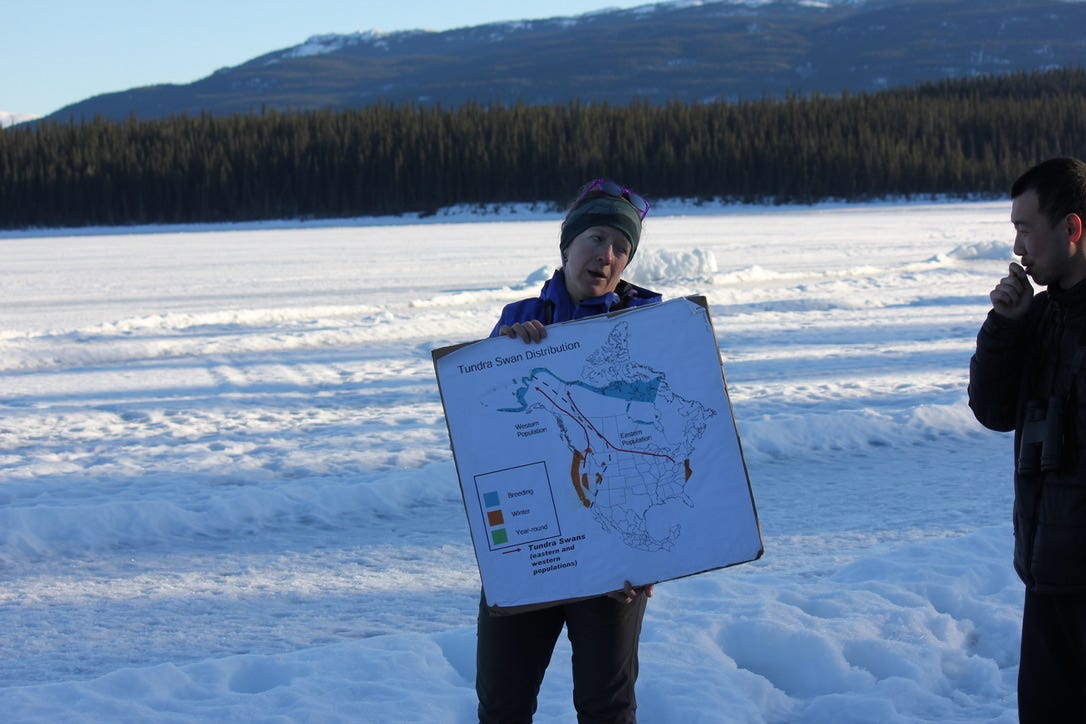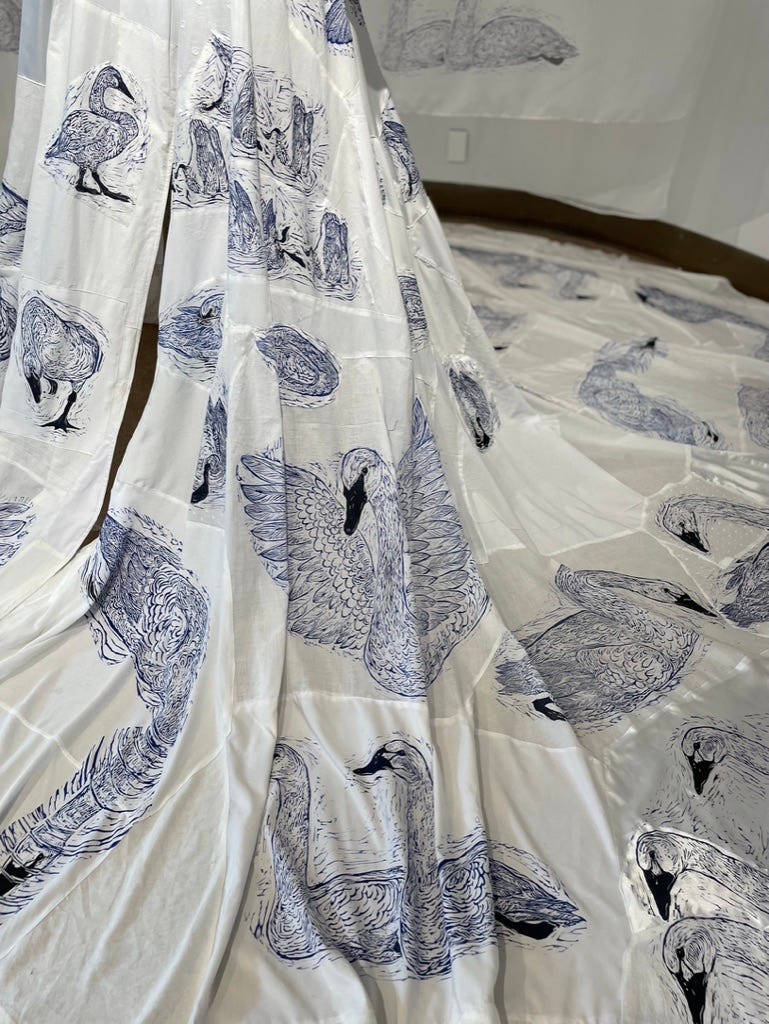In April, I made a pilgrimage of sorts to the Yukon. For years, I have known that many of the Skagit Valley’s overwintering Trumpeter and Tundra swans make a stop in this northwestern Canadian territory on their way to Alaska in the spring. Some of them even nest in northern parts of Canada.
On the shores of Marsh Lake’s M’Clintock Bay lies Swan Haven Interpretive Centre. Environment Yukon’s Wildlife Viewing team hosts a Swan Festival throughout the month of April. Being a shallow lake fed by the Yukon and M’Clintock rivers, this is one of the first areas to melt in the spring and has historically attracted a lot of swans. The shallow water level makes feeding easy, accessible, and offers protection from predators. When I arrived, there were over 800 swans in the area. A local birder maintains a daily count of all birds in the area that is updated outside the centre.
The month-long festival includes tours, events, and an artist-in-residence program for Yukon-based artists. While I was there, several families and individuals made their way across the frozen lake to view and celebrate the swans. Swan Haven’s programming has been important in terms of educating the public about the importance of swans and habitat conservation, as well as responsible viewing practices. I stayed along the frozen lake in an Airbnb and the honk, honk, honking was crystal clear in my cabin. It was a beautiful sight to see (and hear) them all!
I have a lot more to write about this wonderful week, but I will leave you with a few images and this year’s beautiful Swan Festival poster below. Sadly, a recent CBC story that reports that Marsh Lake is at an all-time low in terms of water level. I appreciate the shared stewardship and care for nature that exists in the Whitehorse community and within Canada’s conservation efforts. I look forward to writing more about the Swan Festival in my current book about migratory swans. The book project idea is out in the world and I hope to have some good news to report about that project soon!






